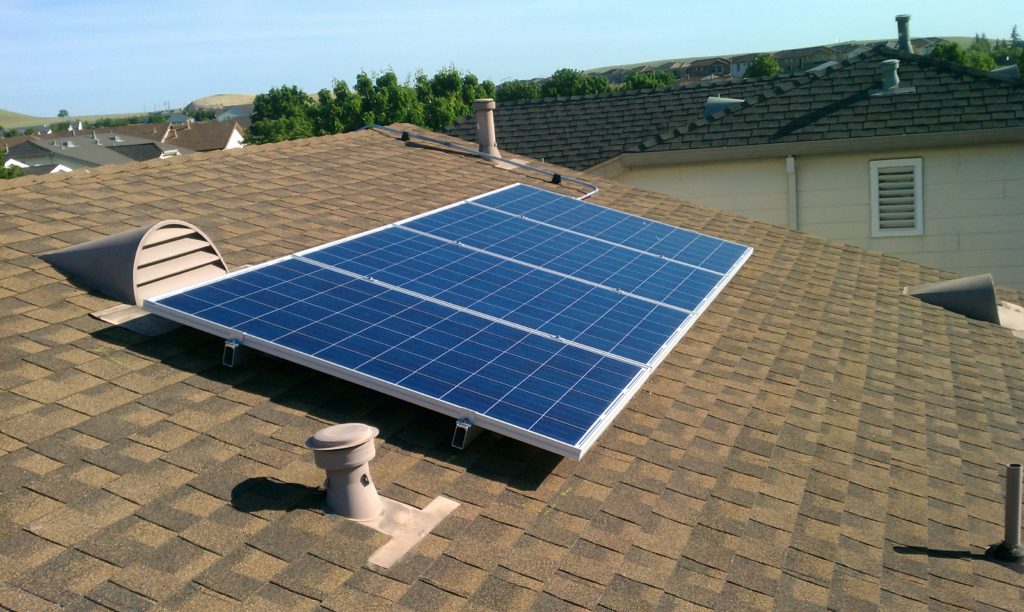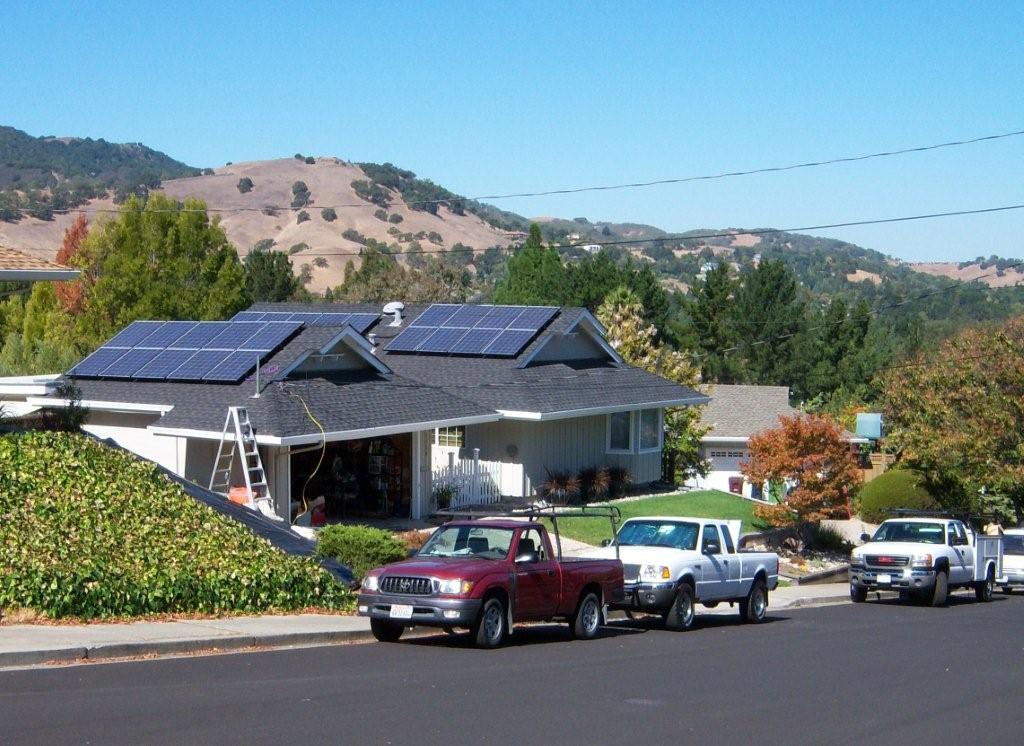Diamond Certified Experts: Residential Solar Energy Basics

Despite the increasing popularity of solar power, many Bay Area homeowners still aren’t sure how to take advantage of it. Photo: Freedom Solar, Inc. ©2019
Just a few decades ago, solar power was a fringe technology whose viability as a widespread energy source was uncertain. Flash forward to today, where solar panels can be seen speckled over rooftops and hillsides throughout the Bay Area and beyond. However, while most Bay Area residents are acquainted with the concept of solar power, far fewer have taken steps to incorporate this technology into their lives. Some are unsure if a solar power system would benefit them, some don’t know if they can afford the cost of installation and some simply aren’t sure where to start. To address these sources of hesitation, we’ve asked eight Diamond Certified Expert Contributors to go over some residential solar basics.
Does solar power really save homeowners money?
If you live in the Bay Area, you’ve likely heard about the benefits of solar power. For instance, as a clean, renewable energy source, it represents an eco-friendly alternative to older, polluting energy sources like fossil fuels. However, even if you’re aware that solar power is better for the planet, you might not realize it’s also better for your wallet. To get an idea of how much you stand to save with solar, Rich Moore of Freedom Solar, Inc. says to simply look at your monthly utility bill. “Generally, the bigger your power bill, the better financial return you’ll get from solar. In most cases, if your electricity costs are more than $100 per month, installing a solar energy system will be a worthwhile long-term investment.”
Even if your current energy costs aren’t extravagant, Chris Zepponi of High Definition Solar says switching to solar can still be a wise long-term investment. “One of the great things about going solar is it allows you to lock in your energy rate, which makes you rate increase-resistant against future inflation. Since the 1970s, energy rates have gone up by an average of 7 percent each year, and many experts predict the rates we currently pay will double or even triple in the coming years. When you switch to solar, you’re locking in your rate for a lifetime, so when the costs inevitably go up, you won’t feel the pinch like everyone else.”
As Mike Rebholtz of Alternative Heating & Air Conditioning Solutions, Inc. explains, the money-saving benefits of solar power can be further increased by converting gas-powered systems and appliances to electric. “One great option for those who have or are planning to install solar energy systems is switching to high-efficiency heat pumps for running their heating and cooling systems. While converting an HVAC system’s power source from gas to electric would normally be more expensive, if you’re getting your electrical from solar, you stand to save a lot of money.”

If your monthly power bill exceeds $100, you’re likely to benefit from installing a solar energy system. Photo: High Definition Solar ©2019
Lease or own?
When incorporating solar, the first decision you’ll need to make is whether to lease or own your system. In the first scenario, you would lease your system from a company via a Power Purchase Agreement (PPA) for a monthly fee. This would allow you to reap the benefits of solar without having to pay for the equipment and installation. However, Jason Lee of Solar System Inc. warns that leasing has some significant pitfalls. “PPA contracts often contain things that get glossed over during the sales presentation,” he explains. “For example, by signing a PPA contract, you agree to make 240 payments to the leasing company over the next 20 years. Despite the contract’s promise that the company won’t put a lien on your home, locking yourself into a 20-year payment plan is essentially doing just that. If you decide to sell your home during the leasing period, you’ll likely have to break the contract, which may end up costing you a lot of money.”
To avoid being locked into a rigid contract, Mr. Lee recommends purchasing your solar power system. “In contrast to leasing, which can lead to a financial loss if you decide to sell your home, owning a solar energy system adds to your home’s resale value. Not only are you free to sell your home without penalty, you’ll likely get a higher price for it, so it’s a win-win situation.”
Solar financing options
If you’ve decided that purchasing a solar energy system is your best option, you’ll need to consider your options for financing. Fortunately, as Dean Alayleh of Highlight Solar explains, there are plenty of options available, including Property Assessed Clean Energy (PACE), a government-sponsored program designed to help California homeowners finance energy efficiency upgrades. “One of the biggest benefits of PACE is that it lumps your system cost into your property tax payment,” he says. “This makes sense, since the presence of a solar energy system tends to increase property value.
“Another option for financing your solar power system is to take out a home equity line of credit,” continues Mr. Alayleh. “It’s easy to get a low-rate loan, and the investment return from a solar power system is much higher than any interest rate you’re likely to pay, so you’re sure to come out in the positive.”
These are just two of the many options available for financing a solar power system. To learn the full scope of your options, contact a local solar energy specialist.

Solar system design consists of several aspects, from choosing panels and other components to determining placement. Photo: Sky Power Systems ©2019
Designing your solar energy system
Solar system design consists of several aspects, from choosing panels and other components to determining placement. According to Bob Winn of Sky Power Systems, an important detail that many homeowners overlook is the staying power of the manufacturer they purchase from. “During the last couple of decades, the solar industry has seen manufacturers come and go, and new ones are sprouting up all the time,” he explains. “Given this volatility, it’s just not a good idea to entrust your money to a relatively new company. Even if they offer a 25-year warranty, if they go out of business 10 years later, that warranty won’t be any good. A better choice is to buy from an established company that’s more likely to be around 20 years down the road.”
Another smart choice for system design is investing in high-quality components. “In order to attain your energy goals, you’ll need a system that utilizes the best technology available,” explains Renzo Castillo of SolarUnion. “One example of this is inverters, which convert the energy generated by solar panels into usable power for the home. Many solar energy systems rely on string inverters, which are the least expensive option, but a better option is micro-inverters or power optimizers. By installing a system that’s optimized with cutting-edge technology, you’ll get the best possible long-term value and performance.”
Jeremy Carlock of Got Watts Electric, Solar & HVAC gives a final piece of advice for designing your solar system. “Be sure to consider any potential future energy needs you may have,” he recommends. “Solar power systems are often designed to supply just enough energy to meet the household’s current needs. The problem is, many homeowners neglect to consider how their energy needs might change five, 10 or 20 years down the road. For example, installing an electric vehicle charging station or a swimming pool can substantially increase your power usage. If your system isn’t set up to accommodate these needs, issues can arise. By looking ahead, you can design your system in a way that avoids future problems.”
Now that you have a better understanding of how to incorporate solar power into your life, it’s time to take action.
Find a Diamond Certified solar contractor in your area